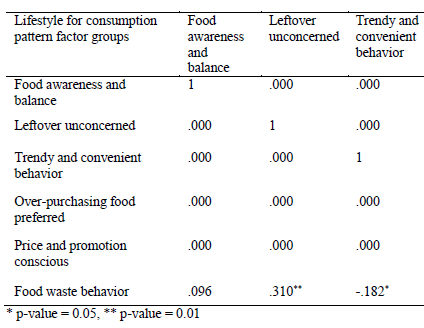Consumption Patterns on Food Waste Behavior: A Case Study inNong Chok District, Bangkok
Keywords:
Food waste behavior, Consumption patterns, Community, HouseholdAbstract
This study aimed to study the relationship between consumption patterns and food waste behavior at household level in Nong Chok district, Bangkok. The data were collected with 210 samples by using the questionnaire and analyzed by using descriptive statistics, factor analysis, and Pearson correlation coefficient. Findings showed that most respondents were aged at 46-60 years old and married (and have children). About 38.1% of total respondents have participated in waste separation campaign of the community. For food purchasing behavior and post-consumption management, about 39.0% of total respondents throw out the food surplus, followed by keeping food surplus for the next meals (38.8%), feeding animal (15.7%), and making compost at home (6.5%), respectively. The result of factor analysis can be divided into 5 factors that have unique characteristic. Findings on the relationship between consumption patterns and food waste behavior revealed that lifestyle for consumption pattern on leftover unconcerned, over-purchasing food preferred, and price and promotion conscious causing food leftovers statistically positively affected food waste generation (p-value < 0.01). Consumption patterns of respondents tend purchase foods over necessary causing food waste continue rising. Thus, promoting food waste reduction and creating awareness of food waste impact on the environment through marketing activities and driving food waste separation to all sectors should be encouraged.

